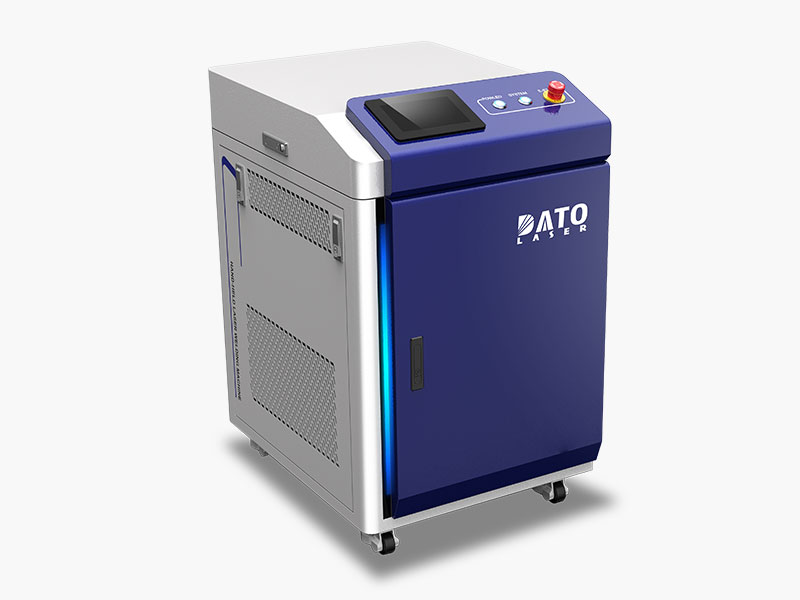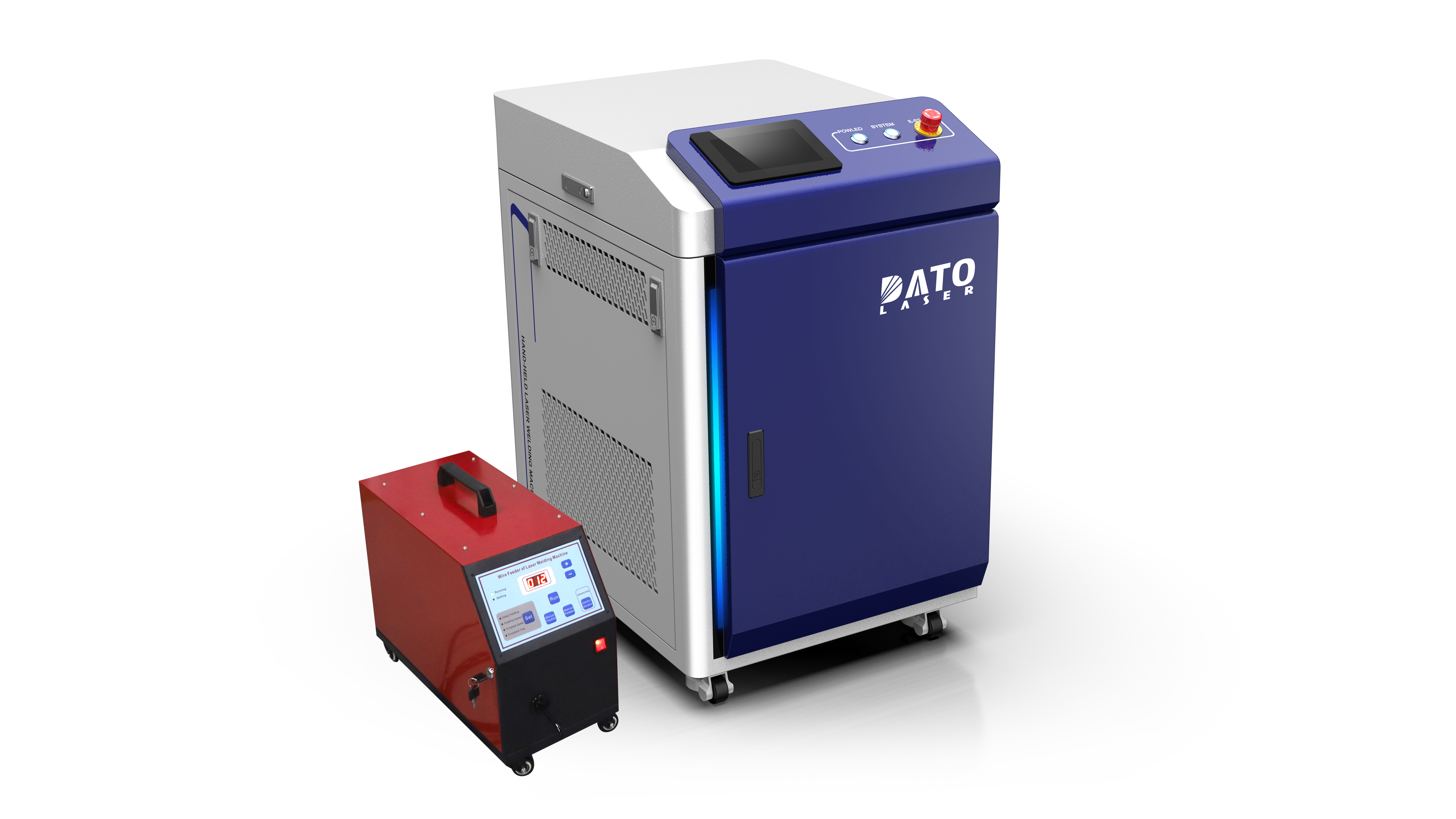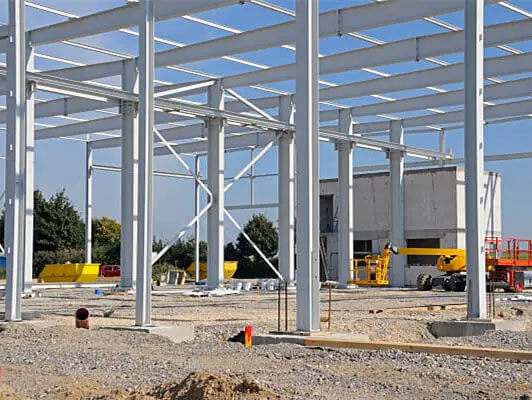Ensuring Long-Term Reliability and Minimizing Downtime for Your Laser Welding Machine

Investing in a laser welding machine is a significant step towards enhancing your manufacturing capabilities. However, like any sophisticated piece of machinery, ensuring its long-term reliability and minimizing downtime is crucial for maximizing productivity and return on investment. At Dato and Leapion, we are committed to not only providing high-quality laser welding machines but also empowering our customers with the knowledge and best practices to maintain them effectively. This article will explore the key strategies and practices for ensuring the long-term performance of your laser welding machine and reducing the risk of costly downtime.
The Importance of Laser Welding Reliability
Laser welding reliability is paramount for any business that relies on this technology. Unplanned downtime can lead to significant production delays, increased costs, and potential loss of revenue. A reliable laser welding machine, on the other hand, ensures consistent performance, high-quality welds, and uninterrupted production. Therefore, prioritizing the maintenance and care of your laser welding machine is not just a good practice; it's a necessity for long-term success.
Think of your laser welding machine as a high-performance vehicle. Regular maintenance, proper care, and timely attention to potential issues are essential for ensuring its smooth operation and longevity. Neglecting these aspects can lead to breakdowns, costly repairs, and decreased productivity.
Key Strategies for Ensuring Long-Term Reliability
Several key strategies can help you ensure the long-term reliability of your laser welding machine. These strategies encompass preventative maintenance, proper operation, and proactive monitoring. Let's delve into each of these aspects:
1. Preventative Maintenance:
Preventative maintenance is the cornerstone of ensuring the long-term reliability of any machinery, and laser welding machines are no exception. Regular maintenance helps identify potential issues before they escalate into major problems, reducing the risk of unexpected downtime.
What are the best practices for maintaining a laser welding machine? A comprehensive preventative maintenance program should include regular cleaning, lubrication, inspection of critical components, and timely replacement of consumables. This program should be tailored to the specific requirements of your laser welding machine and the manufacturer's recommendations.
a. Regular Cleaning:
Dust, debris, and other contaminants can accumulate on the optical components, cooling systems, and other critical parts of the laser welding machine. Regular cleaning is essential for maintaining optimal performance and preventing damage.
Why is regular cleaning important? Contaminants can interfere with the laser beam, reducing its power and quality. They can also clog cooling systems, leading to overheating and potential damage to the laser source. Regular cleaning ensures that all components function properly and efficiently.
How should I clean my laser welding machine? Use appropriate cleaning solutions and lint-free cloths to clean the optical components, such as lenses and mirrors. Clean the cooling system filters and ensure that the ventilation system is free from obstructions. Follow the manufacturer's guidelines for specific cleaning procedures.
b. Lubrication:
Moving parts, such as the motion system components, require regular lubrication to ensure smooth and efficient operation. Proper lubrication reduces friction, minimizes wear and tear, and extends the lifespan of these components.
Why is lubrication important? Insufficient lubrication can lead to increased friction, overheating, and premature failure of moving parts. Regular lubrication ensures that these components operate smoothly and reliably.
How should I lubricate my laser welding machine? Use the recommended lubricants and follow the manufacturer's guidelines for lubrication procedures. Apply lubricant to the appropriate points and ensure that all moving parts are properly lubricated.
c. Inspection of Critical Components:
Regularly inspect critical components, such as the laser source, optical components, cooling system, and motion system, for any signs of wear, damage, or misalignment. Early detection of potential issues can prevent major breakdowns and costly repairs.
What components should I inspect regularly? Focus on the laser source, optical components (lenses, mirrors), cooling system (pumps, filters, heat exchangers), motion system (motors, bearings, guides), and electrical connections. Look for any signs of wear, damage, corrosion, misalignment, or loose connections.
How often should I inspect these components? The frequency of inspection depends on the usage and operating conditions of the machine. However, a general guideline is to inspect critical components at least once a month or more frequently if the machine is used intensively.
d. Timely Replacement of Consumables:
Laser welding machines use various consumables, such as nozzles, lenses, and filters, that need to be replaced periodically. Timely replacement of these consumables ensures optimal performance and prevents damage to other components.
Why is it important to replace consumables on time? Worn or damaged consumables can affect the laser beam quality, reduce welding efficiency, and potentially damage other components. Timely replacement ensures that the machine operates at its peak performance.
How often should I replace consumables? The replacement frequency depends on the type of consumable and the usage of the machine. Refer to the manufacturer's guidelines for recommended replacement intervals.

2. Proper Operation:
Operating the laser welding machine correctly is crucial for ensuring its long-term reliability. Improper operation can lead to damage, reduced performance, and increased downtime.
How can I ensure proper operation of my laser welding machine? Always follow the manufacturer's operating instructions, use the machine within its specified parameters, and ensure that operators are properly trained. Avoid overloading the machine or using it for applications it is not designed for.
a. Following Operating Instructions:
Always adhere to the manufacturer's operating instructions and guidelines. These instructions provide essential information on how to operate the machine safely and efficiently.
Why is it important to follow operating instructions? The operating instructions are designed to ensure the safe and efficient operation of the machine. Deviating from these instructions can lead to damage, reduced performance, and potential safety hazards.
b. Using the Machine Within Specified Parameters:
Operate the laser welding machine within its specified parameters, such as power output, welding speed, and material thickness. Exceeding these parameters can lead to damage and reduced lifespan of the machine.
Why is it important to stay within specified parameters? Operating the machine outside of its specified parameters can put excessive stress on its components, leading to premature failure and reduced reliability.
c. Ensuring Proper Operator Training:
Ensure that all operators are properly trained on how to operate the laser welding machine safely and efficiently. Proper training minimizes the risk of operator error and ensures that the machine is used correctly.
Why is proper operator training important? Properly trained operators are less likely to make mistakes that could damage the machine or lead to inconsistent welds. Training also ensures that operators understand the importance of maintenance and proper operating procedures.
3. Proactive Monitoring:
Proactive monitoring of the laser welding machine's performance can help identify potential issues before they escalate into major problems. This includes monitoring the laser power output, cooling system temperature, and other critical parameters.
How can I proactively monitor my laser welding machine? Use the machine's built-in monitoring tools to track key performance parameters. Regularly check for any unusual noises, vibrations, or error messages. Implement a system for recording and analyzing performance data to identify trends and potential issues.
a. Monitoring Laser Power Output:
Regularly monitor the laser power output to ensure that it is within the specified range. A decrease in power output can indicate a problem with the laser source or optical components.
Why is monitoring laser power output important? A decrease in laser power output can lead to reduced welding efficiency and inconsistent welds. Monitoring the power output allows for early detection of potential issues.
b. Monitoring Cooling System Temperature:
Monitor the cooling system temperature to ensure that it is within the specified range. Overheating can damage the laser source and other critical components.
Why is monitoring cooling system temperature important? Overheating can lead to premature failure of the laser source and other critical components. Monitoring the temperature ensures that the cooling system is functioning properly.
c. Analyzing Performance Data:
Collect and analyze performance data to identify trends and potential issues. This can help you proactively address problems before they lead to downtime.
Why is analyzing performance data important? Analyzing performance data can reveal subtle changes in the machine's operation that might otherwise go unnoticed. This allows for proactive maintenance and prevents major breakdowns.
Minimizing Downtime and Maximizing Productivity
By implementing these strategies, you can significantly minimize downtime and maximize the productivity of your laser welding machine. A well-maintained machine operates more efficiently, produces higher-quality welds, and requires less frequent repairs.
How can I minimize downtime and maximize productivity? By implementing a comprehensive preventative maintenance program, ensuring proper operation, and proactively monitoring the machine's performance, you can minimize the risk of unexpected downtime and maximize productivity.
Dato and Leapion: Your Partner in Laser Welding Reliability
At Dato and Leapion, we are committed to providing our customers with not only high-quality laser welding machines but also the support and knowledge they need to ensure their long-term reliability. We offer comprehensive training programs, maintenance services, and technical support to help you keep your laser welding machine operating at its peak performance.
Our Commitment to Customer Satisfaction:
We are dedicated to providing our customers with the highest level of service and support. Our commitment extends beyond the initial purchase, as we strive to be a trusted partner in your long-term success. We understand that your success is our success, and we are committed to helping you maximize the value of your laser welding investment.
Comprehensive Training Programs:
We offer comprehensive training programs for operators and maintenance personnel. Our training programs are designed to equip your team with the knowledge and skills they need to operate and maintain your laser welding machine effectively.
What do our training programs cover? Our training programs cover all aspects of laser welding machine operation, including safety procedures, operating instructions, maintenance best practices, and troubleshooting techniques. We provide both on-site and remote training options to meet your specific needs.
Reliable Maintenance Services:
We offer reliable maintenance services to help you keep your laser welding machine in optimal condition. Our team of experienced technicians is available to provide preventative maintenance, repairs, and technical support.
What maintenance services do we offer? Our maintenance services include regular cleaning, lubrication, inspection of critical components, timely replacement of consumables, and troubleshooting of any issues that may arise. We offer remote maintenance options to minimize downtime and maximize productivity.
Responsive Technical Support:
Our responsive technical support team is available to answer your questions and provide assistance whenever you need it. We are committed to providing prompt and effective solutions to any technical issues you may encounter.
How can you access our technical support? You can reach our technical support team through phone, email, or online chat. We are available to provide assistance during regular business hours and offer emergency support for critical issues.

Conclusion: Investing in Reliability for Long-Term Success
Ensuring the long-term reliability of your laser welding machine is not just about avoiding downtime; it's about maximizing your investment, enhancing productivity, and ensuring consistent, high-quality results. By implementing a comprehensive preventative maintenance program, operating the machine correctly, and proactively monitoring its performance, you can significantly reduce the risk of unexpected breakdowns and ensure the longevity of your equipment.
At Dato and Leapion, we understand the importance of machine uptime and are committed to providing you with the tools and support you need to succeed. We believe that a reliable laser welding machine is an essential asset for any modern manufacturing operation, and we are dedicated to helping you achieve your production goals.
By choosing Dato and Leapion, you are not just investing in a laser welding machine; you are investing in a partnership that is focused on your long-term success. We are here to support you every step of the way, from the initial purchase to ongoing maintenance and support. We encourage you to contact us today to learn more about our laser welding solutions and how we can help you achieve your manufacturing objectives.
Key Takeaways:
Prioritize Preventative Maintenance: Implement a comprehensive preventative maintenance program that includes regular cleaning, lubrication, inspection, and timely replacement of consumables.
Ensure Proper Operation: Follow the manufacturer's operating instructions, use the machine within its specified parameters, and ensure that operators are properly trained.
Proactively Monitor Performance: Monitor key performance parameters, such as laser power output and cooling system temperature, and analyze performance data to identify potential issues.
Choose a Reliable Partner: Partner with a reputable supplier like Dato and Leapion that provides comprehensive training, maintenance services, and responsive technical support.
By focusing on these key areas, you can ensure the laser welding efficiency of your machine, minimize downtime, and maximize your return on investment. Remember, a well-maintained laser welding machine is a reliable and productive asset that contributes significantly to your long-term success.
We hope this article has provided valuable insights into how to ensure the long-term reliability of your laser welding machine. If you have any further questions or would like to discuss your specific needs, please do not hesitate to contact us. We are here to help you achieve your welding goals.
Related Blogs
-
 Exploring the Safety, Precision, and Industrial Benefits of Laser Surface CleaningIn today’s fast-paced industrial world, where quality, efficiency, and sustainability are top priorities, manufacturers are constantly seeking better ways to clean metal surfaces without compromising material integrityBlog
Exploring the Safety, Precision, and Industrial Benefits of Laser Surface CleaningIn today’s fast-paced industrial world, where quality, efficiency, and sustainability are top priorities, manufacturers are constantly seeking better ways to clean metal surfaces without compromising material integrityBlog -
 A Complete Guide by DATO and LeapionIn modern industry, surface preparation and maintenance play a crucial role in achieving high-quality manufacturing results. Laser cleaning machines have emerged as one of the most innovative, efficient, and environmentally friendly tools for removing contaminantsBlog
A Complete Guide by DATO and LeapionIn modern industry, surface preparation and maintenance play a crucial role in achieving high-quality manufacturing results. Laser cleaning machines have emerged as one of the most innovative, efficient, and environmentally friendly tools for removing contaminantsBlog -
 Laser cleaning machines are revolutionizing industrial surface cleaning by offering a faster, safer, and more eco-friendly alternative to traditional methods. Whether removing rust, paint, oil, oxide, or other surface contaminants, laser cleaning has become a cutting-edge solution in manufacturing,Blog
Laser cleaning machines are revolutionizing industrial surface cleaning by offering a faster, safer, and more eco-friendly alternative to traditional methods. Whether removing rust, paint, oil, oxide, or other surface contaminants, laser cleaning has become a cutting-edge solution in manufacturing,Blog -
 Introduction: Transforming EV Battery Manufacturing Through Laser TechnologyThe electric vehicle revolution has accelerated dramatically over the past decade, bringing with it unprecedented challenges and opportunities in battery manufacturing. As global automakers commit billions to electrificationBlog
Introduction: Transforming EV Battery Manufacturing Through Laser TechnologyThe electric vehicle revolution has accelerated dramatically over the past decade, bringing with it unprecedented challenges and opportunities in battery manufacturing. As global automakers commit billions to electrificationBlog













